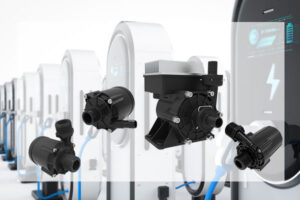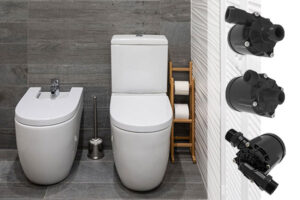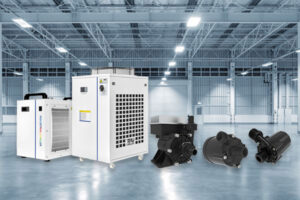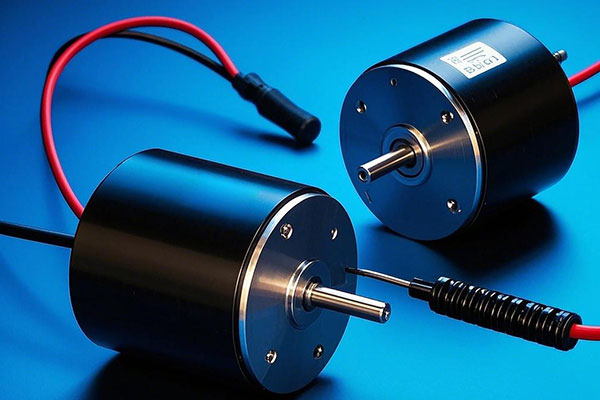
*brushless water pump, a pump without brushes for water circulation*
The world of pump technology is evolving. With increasing demands for efficiency and reliability, brushless DC (BLDC) pumps1 are emerging as game-changers. But are they truly worth the attention they’re getting?
**Brushless DC pumps are known for their superior efficiency, reliability, and longevity2. But what exactly sets them apart from traditional pumps? Let's dive into the technology and benefits behind these innovative systems.
While the name "brushless" may sound technical, the benefits of these pumps are straightforward and impactful. To understand why these pumps are gaining traction, let's first look at what makes them different from traditional models.
Why Are They Called Brushless DC Pumps?
Brushless DC pumps, unlike their brushed counterparts, eliminate the need for brushes. But what does that actually mean in terms of performance and durability?
**A brushless DC pump doesn’t rely on physical brushes to generate motion, which eliminates friction and significantly boosts both efficiency and lifespan. The result? A quieter, more reliable pump.
At the heart of brushless DC technology lies the absence of physical brushes, which are a key component in traditional DC motors. In a brushed motor, friction between the brushes and the commutator leads to heat buildup and mechanical wear. This wear and tear reduces motor lifespan and increases the frequency of maintenance. On the other hand, brushless motors rely on electronic controllers3 that regulate the flow of current, which means there is no physical contact between parts, and therefore, no friction.
This innovative design reduces energy loss4, extends the motor’s lifespan, and improves overall performance. Moreover, without brushes, the risk of electrical arcs is minimized, making brushless DC pumps5 significantly quieter and more efficient than their brushed counterparts.
Key Benefits of Brushless DC Pump Technology
| Benefit | Description |
|---|---|
| Longer lifespan | No brushes to wear out, ensuring a longer operational life. |
| Less noise | Reduced friction leads to quieter operation. |
| Increased efficiency | Less energy loss means lower power consumption. |
What Are the Pros and Cons of Brushed DC Motors?
Brushed DC motors have been the norm for a long time. But are they still relevant in a world that’s embracing brushless technology?

*structure of brushed dc motor pump*
**Brushed DC motors are more affordable but come with significant downsides such as higher maintenance needs6 and lower efficiency compared to brushless motors7.
Despite their long history and simpler design, brushed DC motors have several limitations. The primary issue lies in the brushes themselves, which wear out over time and require frequent replacement. The friction between the brushes and the commutator8 generates heat, which results in energy loss, reduced efficiency, and more frequent maintenance.
Brushed motors are simpler and cheaper to produce, making them suitable for low-cost applications. However, their drawbacks make them less ideal for situations where long-term reliability, high performance, and minimal maintenance are crucial.
Advantages of Brushed DC Motor:
| Advantage | Description |
|---|---|
| Lower initial cost | Easier and cheaper to manufacture. |
| Simplicity | Easy to control and repair, ideal for basic applications. |
| Wide availability | Readily available due to long market presence. |
Disadvantages of Brushed DC Motor:
| Disadvantage | Description |
|---|---|
| Wear and tear | Brushes wear out, requiring frequent maintenance. |
| Increased noise | Friction between brushes generates unwanted noise. |
| Lower efficiency | More energy loss due to friction and heat. |
Why Are Brushless DC Motors Gaining Popularity?
Brushless DC motors are quickly becoming the go-to choice for high-efficiency applications9. What makes them so much better?
**Brushless DC motors are energy-efficient, quieter, and require much less maintenance. These advantages make them ideal for high-performance applications where reliability and precision are essential.
One of the key reasons brushless DC motors are gaining popularity is their efficiency. By eliminating the need for brushes, these motors reduce friction, resulting in lower energy losses. As a result, brushless motors can achieve higher performance with less power consumption, making them ideal for applications that demand continuous operation.
Another important advantage is the reduced maintenance. Since there are fewer moving parts in a brushless motor, there is less wear and tear. This translates into fewer repairs and lower operating costs, making brushless motors a more cost-effective solution in the long run.
Moreover, brushless motors are quieter. With no brushes rubbing against a commutator, there’s less noise, which makes them suitable for environments where noise reduction is a priority, such as in medical equipment or consumer electronics.
Why Choose Brushless DC Motor?
| Feature | Description |
|---|---|
| Higher efficiency | Lower energy consumption due to less friction. |
| Quieter operation | No brushes means less noise. |
| Low maintenance | Fewer parts to wear out, reducing repair needs. |
| Better reliability | Fewer points of failure ensure more reliable performance. |
What Is a Brushless Motor?
Now that we’ve explored the advantages, let’s dive into what makes a brushless motor tick.
**A brushless motor uses electronic controllers10 instead of brushes to create rotational motion, making it more efficient and durable.
At its core, a brushless motor works on the principle of magnetic fields. The motor consists of a rotor and a stator, with the rotor typically being a permanent magnet. The stator, powered by an electronic controller, generates a rotating magnetic field11. This field interacts with the rotor, causing it to spin.
The electronic controller switches the current flowing to the stator windings in a precise sequence, which ensures smooth rotation and high efficiency. Because there are no brushes to create friction or cause wear, the motor can run cooler and last longer, making it ideal for high-performance applications like robotics, drones, and electric vehicles.
Components of a Brushless DC Motor:
- Stator: Generates the rotating magnetic field11.
- Rotor: The rotating part, typically a permanent magnet.
- Controller: Regulates the current to the stator.
Innovations in Brushless DC Motor Structures
Innovations in brushless DC motor structures have led to better performance and energy efficiency in pumps. Let’s look at how these advancements are making a difference.
**By refining rotor and stator designs, manufacturers can enhance the performance and efficiency of brushless DC motors, especially in pump systems.
Brushless motors have undergone significant structural innovations over the years. One of the most notable changes is the use of permanent magnet rotors12, which help minimize energy losses. The precision of the electronic controllers has also improved, allowing for better speed and torque control.
These innovations have been particularly impactful in applications like pumps, where efficiency, durability, and quiet operation are crucial. For instance, the compactness and precision of modern brushless DC motors allow pumps to operate more efficiently while consuming less power, translating to lower energy bills and a longer lifespan for the equipment.
Notable Structural Improvements:
| Improvement | Impact |
|---|---|
| Permanent magnet rotors | Reduced energy loss and improved efficiency. |
| Precision controllers | Better control over speed and torque. |
| Compact designs | Smaller, lighter motors for better performance. |
Structure of Brushless DC Pumps (BLDC Pumps)
How does a Brushless DC pump differ from other types of pumps?
**A BLDC pump integrates a brushless motor13 to offer superior performance, quieter operation, and energy efficiency14 compared to traditional pumps.
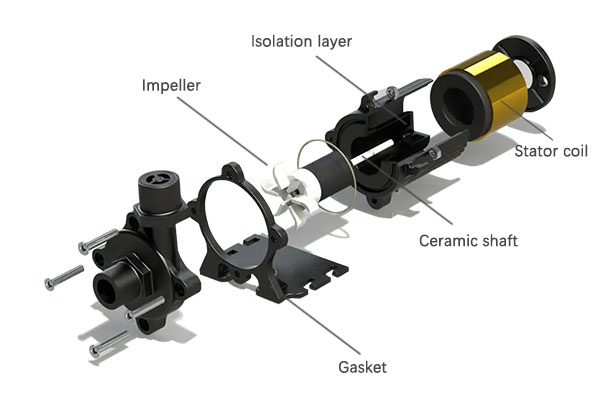
*Structure of Brushless DC Pump*
The structure of a BLDC pump includes several key components: the motor, impeller, rotor, stator, and controller. The rotor, connected to the motor’s shaft, is driven by the magnetic field generated by the stator. This motion powers the impeller, which moves the fluid through the pump.
The electronic controller15 regulates the motor’s speed and power, ensuring that the pump operates efficiently. This design reduces energy loss, noise, and maintenance needs, making BLDC pumps an excellent choice for demanding applications such as water circulation systems, aquariums, and industrial cooling systems.
Key Components of a BLDC Pump:
- Motor: A brushless DC motor typically powers the pump.
- Impeller: Moves the fluid through the pump.
- Housing: Protects the motor and pump components.
- Controller: Regulates the motor’s speed and power for optimal performance.
Differences Between 2-Phase and 3-Phase Brushless DC Motors
When it comes to brushless DC motors, you’ll encounter two main configurations: 2-phase and 3-phase motors. What’s the difference?
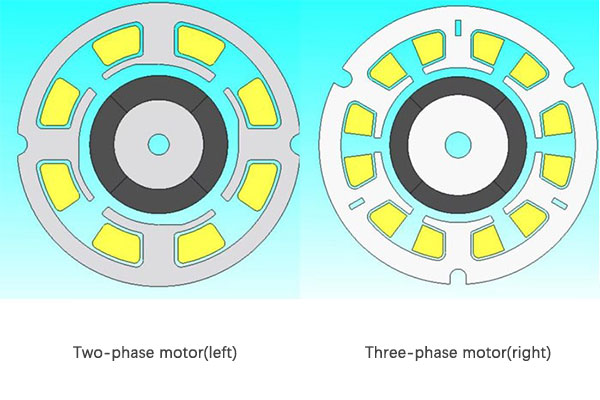
*Difference Between 2-Phase and 3-Phase Brushless DC Motors*
**2-phase motors are simpler and cheaper but less efficient than 3-phase motors, which are ideal
for high-performance applications.
The main difference between 2-phase and 3-phase brushless DC motors16 lies in the number of power supply phases. A 2-phase motor has two coils arranged in a way that the magnetic field alternates between them. This configuration is simpler and often used in low-cost applications where high power isn’t a necessity.
On the other hand, a 3-phase motor uses three coils, which provide smoother and more efficient power delivery. This makes 3-phase motors more suitable for applications that require higher torque and smoother operation, such as in industrial pumps or large HVAC systems.
3-phase motors tend to be more efficient, produce less vibration, and can handle larger loads with minimal energy loss. They also offer better control over the motor speed, which is why they are the preferred choice in situations where reliability and performance are critical.
Comparison of 2-Phase and 3-Phase Brushless DC Motors:
| Feature | 2-Phase Motor | 3-Phase Motor |
|---|---|---|
| Cost | Cheaper to manufacture | More expensive due to additional components |
| Efficiency | Less efficient, especially at high loads | More efficient, handles larger loads better |
| Vibration | Higher vibration and noise | Smoother operation with less vibration |
| Performance | Suitable for lower power applications | Ideal for high-performance, high-torque uses |
How Does the Efficiency of a Brushless DC Pump Compare to Other Types?
Efficiency is key when selecting a pump for your application. How does a brushless DC pump measure up against other types?
**Brushless DC pumps17 are significantly more efficient than traditional pumps, thanks to the absence of brushes and the use of electronic controllers that optimize motor performance.
The efficiency of a pump18 directly affects both its operating cost and environmental footprint. Brushless DC pumps19 excel in this regard because they operate with minimal energy loss. The absence of friction from brushes means that less energy is wasted as heat, and the pump runs cooler, which also extends the lifespan of the components.
In comparison, traditional pumps—whether they are brushed DC, AC, or other types—often suffer from higher energy losses due to friction, mechanical wear, and less efficient controllers. For instance, an AC pump or a brushed DC pump typically requires more energy to achieve the same flow rate as a brushless DC pump.
Furthermore, brushless DC pumps maintain their efficiency over a wide range of speeds, which is essential in applications where variable flow rates20 are required. This makes them ideal for systems where load demands fluctuate, such as in HVAC, water filtration, and medical equipment.
Efficiency Comparison:
| Pump Type | Efficiency | Energy Loss |
|---|---|---|
| Brushless DC Pump | High efficiency with minimal energy loss | Low energy consumption and heat generation |
| Brushed DC Pump | Moderate efficiency | Higher energy loss due to brush friction |
| AC Pump | Moderate to low efficiency | Higher energy loss due to friction and heat |
Conclusion
Brushless DC pumps are a superior choice for applications requiring high efficiency, reliability, and longevity. With their reduced maintenance needs and exceptional performance, they are transforming industries that depend on precise, energy-efficient pumping solutions.
-
Exploring the advantages of BLDC pumps can help you understand their growing popularity and potential energy savings. ↩
-
Understanding the mechanisms behind the efficiency and durability of BLDC pumps can guide you in making informed decisions for your pumping needs. ↩
-
This link offers insights into the role of electronic controllers in enhancing the efficiency and reliability of brushless DC motors. ↩
-
Discover how brushless DC technology minimizes energy loss, leading to more efficient and cost-effective motor operation. ↩
-
Exploring this link will provide a deeper understanding of how brushless DC pumps outperform brushed ones in efficiency, lifespan, and noise reduction. ↩
-
Understanding the maintenance needs of brushed DC motors can help in making informed decisions about their use and potential alternatives. ↩
-
Exploring the efficiency differences can guide users in selecting the right motor technology for their specific needs. ↩
-
Learning about the causes and effects of friction in brushed DC motors can provide insights into their operational challenges and maintenance requirements. ↩
-
Discover the top applications where brushless DC motors excel, offering insights into industries and technologies benefiting from their efficiency. ↩
-
Learn how electronic controllers are pivotal in enhancing the efficiency and durability of brushless motors, crucial for understanding their operation. ↩
-
Explore the fundamental principle behind brushless DC motors' operation, essential for grasping how they achieve high efficiency and reliability. ↩ ↩
-
Discover how permanent magnet rotors significantly reduce energy loss and enhance motor efficiency, crucial for energy-saving applications. ↩
-
Exploring the benefits of brushless motors can help you understand why they are preferred for energy efficiency and quieter operation in pumps. ↩
-
Understanding the importance of energy efficiency can guide you in choosing the right pump for your needs, saving costs and resources. ↩
-
Learning about electronic controllers can provide insights into how they optimize pump performance and reduce energy consumption. ↩
-
Understanding the key differences between these motors will help you choose the right motor for your specific needs, balancing cost, efficiency, and performance. ↩
-
This resource will explain the superior efficiency, smoother operation, and higher torque capabilities of 3-phase brushless DC motors, essential knowledge for selecting motors for demanding applications. ↩
-
Exploring this link will provide deeper insights into why Brushless DC pumps are more efficient and cost-effective, helping you make an informed decision for your application. ↩
-
This link will offer valuable information on the importance of pump efficiency, guiding you towards more sustainable and economical choices. ↩
-
Understanding the benefits of brushless DC pumps in variable flow rate applications can help optimize your system's performance and energy usage. ↩

